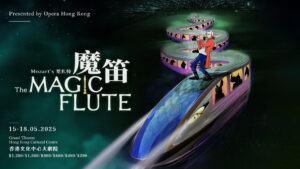Singer-songwriter-musician Janis Ian celebrates her 74 th birthday today. For most of those years, 60 of them in fact, she has been famous, having rocketed to fame at age 14 with her precocious debut single “Society’s Child,” a song about what was at the time the very taboo subject of an interracial romance. At she enters her mid-70s, Ian is the focus of the new documentary Janis Ian: Breaking Silence , a film directed by Varda Bar-Kar that charts the remarkable trajectory of her life and career.
Bar-Kar ( Fandango at the Wall ) says the inspiration to make the film came after a period of personal reflection. Related Stories Greenwich Entertainment Acquires U.S.

Rights To ‘Janis Ian: Breaking Silence,’ Documentary On ‘At 17’ Singer-Songwriter How To Watch The Very First Episode Of ‘Saturday Night Live’ “I started to think about my own identity and whether I feel represented in film and media. And I decided that I don’t,” she explained at a Q&A following a showing of the film at the Laemmle Monica Center in Los Angeles. “And so I thought, well, what if I make a film about an artist with whom I closely identify? Who would that be? And I meditated on that question for a few days and the name Janis Ian came into my mind.
And that’s how it started.” Watch on Deadline She reached out to the artist through Ian’s website. “I left a message saying, ‘Hi, my name is Varda Bar-Kar,’” she recounted.
“’I’m a filmmaker and I would like to make a documentary about you.’” Ian’s initial response? “No.” “I had just walked away from a fairly big documentary contract where the person who was going to be in charge of it turned into another human being before my very eyes right after I signed,” Ian told the audience at the Laemmle.
“I waited it out and walked away and thought, well, that’s the universe telling me that this story is not meant to be told right now.” But Ian and Bar-Kar kept talking, and eventually the project took form. Unusually, in this era of the authorized celebrity bio-doc or music film, Ian didn’t seek a hagiography that she would dictate.
“I had decided from the first that it was Varda’s film, and if I was going to trust her with my life, then I was going to trust her,” she said. “I turned over all of [my] archival stuff. I had digitized everything from publicity photos to family photos.
I told my friends it was okay to talk to her, but to please be honest with her, not to try and shelter anything.” As the film explores, Ian grew up on a farm in New Jersey. She gravitated at a very young age to music and her father taught her to play piano.
Eventually, she became enamored of guitar, but her parents didn’t have the means to buy her one. “There was never any money that I remember,” Ian recalled. “To get a guitar was just unbelievable, to have my own instrument.
I was 13 and my mother walked in and saw me crying and asked what was wrong. And I said, ‘I know we can’t afford it, but I really, really need a guitar.’ And I said that knowing that I was putting pressure on her and I felt horrible, but my grandparents bought me the guitar because they had some disposable income from their savings.
Those little things I think are what keep you grounded as you get older because you remember the importance of those things.” Her rapid emergence on the folk music scene brought her into the company of Joan Baez, Pete Seeger, and Arlo Guthrie, who became her close friends. From them and Bob Dylan she absorbed a commitment to principle, which would be tested early when her first record producer, Shadow Morton, suggested she consider altering the lyrics to “Society’s Child” to disguise its interracial scenario.
“He offered me the choice of changing that word ‘Black’ to anything else and guaranteed me a hit. Those were, pardon me, the good old days when the mafia ran the music business and you really could guarantee someone a hit,” she said. “And he was very serious.
He wanted me to understand that I had a choice, but he was very clear that it was up to me. And there was a man standing there, Jacob Solomon, who looked at me and said, ‘If you whore now, you’ll whore forever.’ And I thought about it for a nanosecond, and my heroes were Baez and Dylan and Pete Seeger, and they would never do that.
” At the age of 23, Ian recorded “At 17,” a huge hit that she performed on the very first episode of Saturday Night Live in 1975. For every triumph there has been a setback or challenge, seemingly. When she was 16, she appeared on the Smothers Brothers comedy show, with a slightly older female friend as her chaperone.
Bill Cosby, a fellow guest on the show, somehow interpreted the girls’ relationship as lesbian, and made it his business to try to get Ian blacklisted. Much later in her career, Ian’s business manager cooked her books, making off with Janis’s money and leaving her in serious debt to the IRS. Instead of feeling bitter about the embezzlement, she takes a philosophical perspective.
“The way I look at it, I put both of his daughters through college,” she said. “And he died, and I didn’t.” The film explores Ian’s romantic relationships with men and women and her evolving sense of her sexuality.
She came out as lesbian in 1993 around the release of her album Breaking Silence (which gives the documentary’s its subtitle). Bar-Kar cast four actresses to play Ian at various stages of her life. The filmmaker doesn’t call these sequences “recreations.
” “I call them mood shots because they’re so fragmented,” Bar-Kar explained. “I don’t quite see them as full recreations, but they’re woven in with actual photographs, with actual footage, with stock footage, with archival footage. It’s all really tightly mixed together.
” In addition to being one of the great songwriters of all-time, Ian is a captivating raconteur, which has made for engaging Q&As with documentary audiences. To hear the artist speak — about friends like Janis Joplin, an unforgettable brunch at home with Nina Simone and James Baldwin, sharing recording studio space with Bruce Springsteen and the concert stage with Billy Joel, what she learned from acting teacher Stella Adler — is to marvel at the breadth and depth of her experience. On Simone : “When I was 15, 16, I met Nina, and she was very difficult to be friends with.
Some artists, some people, are a little crazy because of drugs or liquor or whatever, but some people are a little crazy biologically. Nina was biologically in a different space, and she was very difficult to be friends with. But I also felt like I learned more in 10 minutes of watching her than 10 hours of watching anyone else.
” On Joplin : “We just became friendly. We were two girls with really bad skin who felt we were very fat and very ugly, and there weren’t a lot of people Janis could be like that around, I don’t think. And we would troll [Greenwich Village] and buy sunglasses together.
And my Grammy dress [in 1968]...
I bought that with Janis at a little shop on the Upper East Side that was really cheap. So that’s where we shopped. And she was very, very good to me.
I was like a mascot for people like her and Jimi [Hendrix]. I was 16. They were all in their 20s.
The wonderful thing about really talented people is that all of these things that we use to separate ourselves — race, gender, height, weight, color, nationality, religion — all of those things don’t matter. Anybody who’s really a great artist in my entire life, I’ve never met a great artist who cares about those things more than they care about whether you’re a great artist. And I think for me, the fact that those people recognized that in me made a huge difference to me because it meant that I was worthy.
To have somebody like Odetta take me under her wing meant that I was worthy. If I think about it, I was really, really lucky.” On Stella Adler (acting coach of Marlon Brando, among others): “I was never comfortable in my body on stage.
I always felt like I was hiding behind a guitar or piano, but I didn’t know how to present myself. And I came out of folk music, which means that you sort of stand there and sing and it’s really boring. And so I went to David Craig to learn some movement and he watched me and said, ‘I can’t do anything for you, but you should study with Stella Adler.
’ And I said, ‘Who’s that and why?’ And he said, ‘Because Stella Adler is 83 and everyone should study with Stella Adler...
“I was 33, she was 83. I studied with her every class I could for the five remaining years that she taught. We became very close friends to the point where when I was in the hospital, she offered to drop all her classes to spend the week with me.
I miss her every single day. She gave me a language for what I felt about being an artist that I had never had before. If I am articulate about being an artist, it’s because of Stella, not because of me.
” A couple of years ago, Ian had give up singing and cancel a world tour after she was diagnosed with scarring of her vocal cords. She continues to write music, however, and says she’s working on some future projects, including a tribute to Leonard Bernstein’s music, where she will try a spoken word or similar approach to performance. The rights to her 2008 autobiography, Society’s Child, recently reverted to Ian.
“[It’s] is beautifully written,” Bar-Kar said at the Q&A. “The audible version actually won a Grammy and Janis will be re-releasing [the memoir] within three months or so. So, keep an eye out for it.
It’s a really, really great complement to the film.” “I was very honest in the autobiography, and I talked about a lot of things, some of which just couldn’t make the film that were in some ways deeply embarrassing to me,” Ian noted, saying that when she first interacted with people who had read her book, she felt curiously exposed. “It was like being totally naked in front of a stranger.
.. And the film is a bit like that too for me.
I’m still taking it in.”.
Entertainment

Grammy Winner Janis Ian On Career That Began At Age 14, And Bonds With Janis Joplin, Pete Seeger, Nina Simone & More

Singer-songwriter-musician Janis Ian celebrates her 74th birthday today. For most of those years, 60 of them in fact, she has been famous, having rocketed to fame at age 14 with her precocious debut single “Society’s Child,” a song about what was at the time the very taboo subject of an interracial romance. At she enters [...]















